Heading South - Erie Canal
29/09/08 07:34 Filed in: Canals
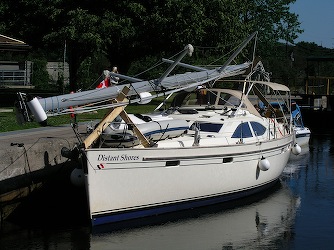
This Fall we are heading south with the seasons. We have just left Toronto a week ago and have spent the last few days in the Erie Canal. For Canadians in Ontario and Quebec the Erie and Champlain Canals offer a quick passage through to the hudson River and New York City. This means you don't need to go down the St Lawrence River - a tougher and much longer route if your destination is the US East cost and South.
Here are a few pix from the Erie. It is a very nice trip and well worth planning a week to do the Canal. Although it can be done in three very full days that would mean you miss the opportunity to see the small towns along the way. We especially liked Fort Plains, Amsterdam, Sylan Beach, Fulton and Waterford. There are probably many more we have yet to discover. Many of these towns offer free dockage to encourage boaters to stop. Some even offer free electric hookup and even wifi?!? Such hospitality!
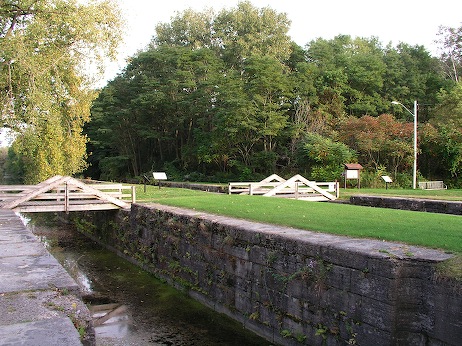
Park with an original Erie Canal Lock Circa 1880.
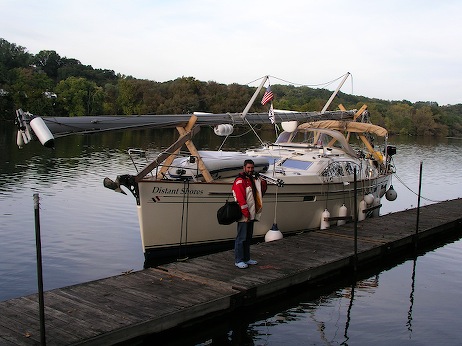
Alongside at a free dock near Amsterdam
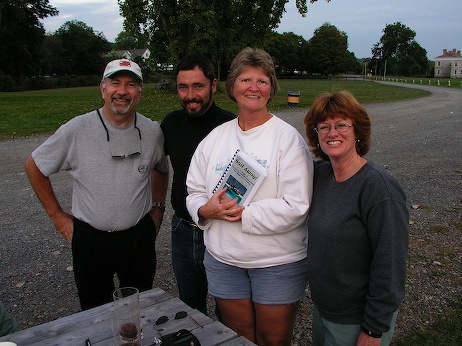
We meet up with cruisers who have an original copy of the first edition of our cruising book! Great to meet up underway!
Canal Tip - Mast on deck - going through the canal means taking the mast down since the clearance is only about 20 feet. Most people carry their mast on deck although you can have a company truck the mast down for you. We haven't found problems with carrying it on deck if you take a few simple precautions. First of all it has to be very well supported. I recommend you building horses to support the mast fairly low over the deck. Our first time we had tall horses both fore and aft and it was difficult to reinforce them to handle the weight of the mast so high up in the air. Remember their will be movement in the boat from the occasional big wake to deal with. We often see boats with sturdy horses capable of supporting the mast but not dealing with pitching of the boat. The mast can start to move fore and aft in this case. My solution this time was to build simple tripods. A tall one at the stern gives us walking room in the cockpit and a lower one at the bow keeps weight lower to the deck.
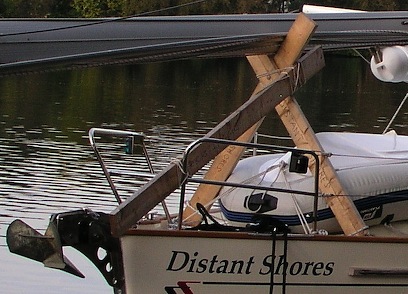
The other problem in doing the canal with the mast on deck is that the mast will hang out over the ends. Distant Shores mast is roughly 57 feet long versus our LOA of 42. So we have about 15 feet extra to deal with. The main concern is banging it against the lock walls. I set it roughly halfway on deck so it sticks out 7-8 feet at bow and stern. The stern isn't a problem since the boat is quite beamy astern. We haven't found we have ever been near to hitting the lower mast end. But the bow is a problem. My solution is to tie fenders to either side of the masthead. This will cushion the mast if it were to bump into a lock wall.
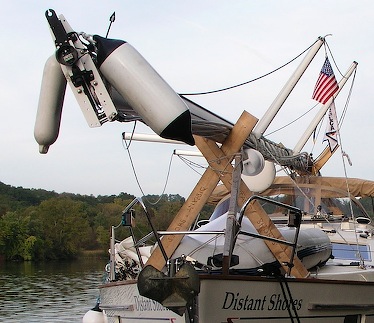
So there are my two canal tips - Number 1) Secure the mast very well with special consideration to pitching movement, and Number 2) protect the masthead.
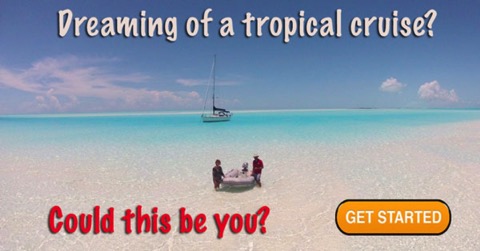
Comments
Revisiting the Bahamas - are they ruined?
31/07/08 06:58 Filed in: Communications | Shoal draft
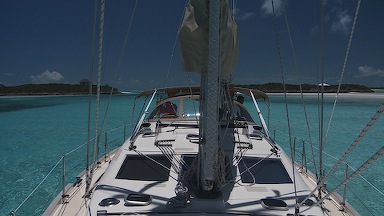 Here is a brief overview of our experience in the Bahamas. For years I had dreamed of getting WAY off the beaten path and really exploring in the Bahamas. Now we have done it and it was better than I imagined. Why?
Here is a brief overview of our experience in the Bahamas. For years I had dreamed of getting WAY off the beaten path and really exploring in the Bahamas. Now we have done it and it was better than I imagined. Why?Returning can be difficult. You have a perfect image of a place and when you go back years later it has changed. Before you know it you are heard to say "You think its nice here now - you should have seen it 15 years ago!! Now its been ruined". We have heard this more times than I can count. Either your favourite restaurant has closed, prices have risen or maybe your rose coloured glasses have slipped a bit. I was really worried before we returned to the Bahamas since our last visit was in 1996 - and I was concerned that I would be caught saying "this place has been ruined".
Well, I am happy to report we were able to return and I have not said that!!!!
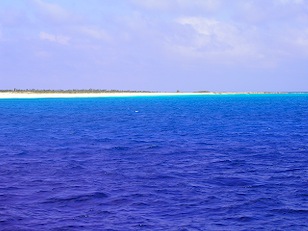
Of course things have changed in 12 years... but many of those changes are for the good, at least from my perspective.
Communications - Here's a big improvement. We remember waiting in line at the Telephone Office (BATELCO) to make a call. It was inconvenient and expensive. This time we walked into the BATELCO Office in tiny remote Mayaguana, and walked out 10 minutes later with a GSM chgip for our Euro phone. Voila - instant reasonable communications throughout the islands. Good coverage and fair prices. Plan on taking an open GSM phone with you. Their service is quite good, especially considering the wide area they have to cover. We had service in most areas. On top of that we had wifi internet access! So we had real communications with back home and it was affordable.
Crowding - I had been worried the Bahamas would be more crowded than before - but it didn't seem so. Certainly more boats seemed to be in some of the popular areas, but not much. And getting further off the beaten path meant we easily had whole islands just to ourselves.
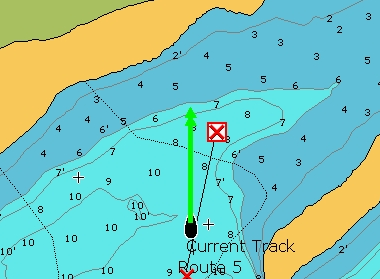
Money - Here's one area I was expecting an improvement but didn't find one. Banks and bank machines have expanded only slightly, and in the remote islands there are still many islands where you can't get money from a bank since there isn't one on the island. Just plan ahead and bring cash to the islands. You will regret if you don't and have the opportunity for super great local cooking but are hoarding your cash until the next Cash Machine.
Pick the Season - We still feel the nicest season to cruise the Bahamas is the spring. We arrived in May just after many cruisers had left to head north. The weather in April May and June is often the best of the year. We enjoyed a fabulous cruise with lovely breezes and just one front. Perfect for exploring the out islands! If you get down as many do, for the winter, don't head out to soon in the spring. Its often the best time!
Its not to late - the Bahamas haven't been ruined. Maybe we'll see you down there on our next visit! If you see us please come and say hi to us on "Distant Shores"!
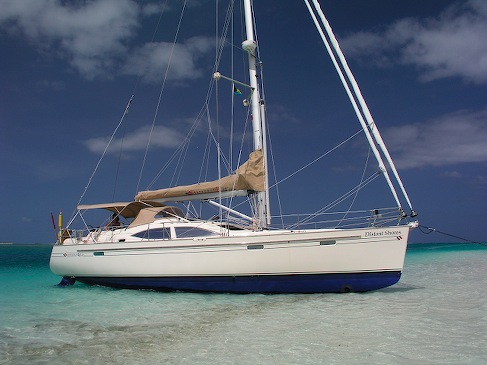
Shallow Water Dreamboat!
01/06/08 15:52 Filed in: Southerly Boats | Shoal draft
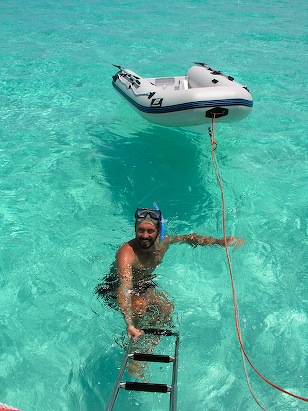
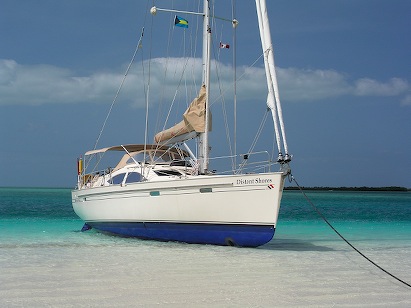
We have been able to beach the boat for the first time and dry out on the sand. This is a feature of the Southerly and we found we could explore areas where other boats can't go. There are so many shallow islands without good all-weather anchorages (for deeper boats) but were great for us. We have been lifting the keel up to about 4 and a half foot draft and then venturing of the beaten track.If it is really shallow we can set the draft as low as 3 foot.
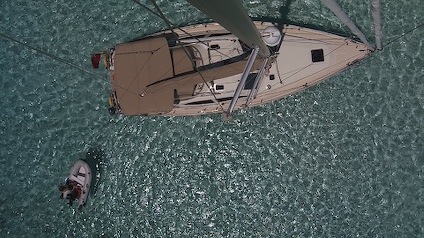
To beach the boat we have been looking around for a nice spot, then running up on the beach on a falling tide. Just be sure not to do it at the very highest in case you can't get off on the next high. This is apparently called being "neaped" by Robert - our Northshore expert. So, we pick a nice beach - protected from swells and with no rocks on the bottom - and run up to the beach at near high tide. We prepare our Fortress stern anchor and line on the aft swim platform and drop it 75 feet away as we head in. We head for the beach at about 2-3 knots and gently fetch up on the sand. Then I walk the anchor out forward to stop us drifting away if we want to stay for the night. In this case we will stay for 2 low tides and float off again in the next high.
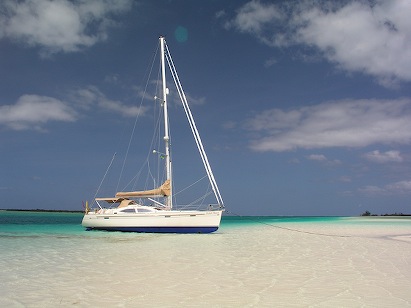
So the verdict after a 6 week dream cruise in the Bahamas is that this is our perfect Bahamas boat!
After 5000 miles
01/05/08 22:34 Filed in: Southerly Boats
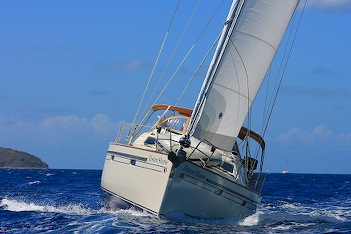
I thought I would put down a few thoughts about the boat so far.
Passagemaking with a swing keel – most of our 5000 miles have been open ocean. Many people have asked about the swing keel on passage. Firstly I must say it has been great! The swinging part of the keel weighs over 3000 pounds and it does not rattle. People who have had other swing-keel boats ask this – but ours does not and I truly doubt that a keel this heavy could possibly rattle. It must be a problem with centerboarders where the keel is much lighter. The other thing with the keel is that having a 9-foot draft (keel all the way down) makes the boat VERY stable. At sea she rolls quite a bit less that Two-Step did. Similarly when we are at anchor we seem to roll less than other boats in the anchorages we have been in. Originally I thought we might use the keel more like a dinghy – raising it when going downwind and lowering it all the way for beating. But so far we have been happier having it down at sea – less rolling and a more comfortable motion. Downwind I do raise it a little bit but not much. Since it swings back and up ino the hull, raising it a little essentially just moves it aft but not much shallower. This has been useful making the boat sail downwind.
Docking with the bow thruster and rudders - in close quarters has taken a bit of getting used to. Mainly because our previous boat was so different - long keel, low and heavy. First of all you absolutely need the bow thruster I think. Otherwise she handles well over 1.5-2 knots with just the rudders but lacking the propwash she needs the thruster to handle in slow speeds. One big advantage I have found is that with the thruster she handles quite well in reverse as well as forward. Many boats (including our old "Two-Step") did not go in reverse. So in summary, I think she handles quite well in close quarters. We have now gone into 40-50 different docks/marinas and had no problems. One other idea is to use the keel. With the keel up she slides sideways in turns. Keel down she tracks nicely and turns well. Keel half way up her bow blows off the wind. I am getting better at using the keel like this to help manoeuvrability in close quarters. One funny situation we had last week involved getting into a slip with pilings. We pulled into the slip and were trying to grab the pilings when we ran aground on the mud. Now we had time to get the lines on the pilings sorted out. When everything was sorted we raised the keel and moved into the slip. Kind of like having a parking brake!
Tropical Southerly – I absolutely love the pilothouse/raised saloon on the Southerly 42. Being able to see out at anchor is great, and at sea I think it is a big part of the reason I don't get seasick at all on the new boat. But the problem with the big windows is the sun heats up the boat. We did not get curtains done by the factory, perhaps we should have. Now we are installing “Fifertex” curtains and that seems to do the trick. I have also added 5 fans throughout the boat. The Hella 2-speed “Turbo” fans are great. Antifouling has been not the greatest. The factory put on International's Uno which is not available over here. In the Caribbean grass fouling seems to be a problem. The local antifoulings all tout some sort of wonder cure for it. I guess you can't hope for a perfect coating that will work well everywhere. And the antifouling has all fallen off around the bow thruster fairing. We will replace it when we dry out for the first time in the Bahamas...
Heading to the Bahamas – We are SO EXCITED to be heading back to our favourite cruising grounds – the Bahamas! We will be there for most of May and early June – a very good time to cruise these lovely islands. The last time we were there I vowed I would come back with a shallower boat and really explore. We are doing it. When we talk to veteran Bahamas experts they always ask how much we draw. When we say 2 foot – 10 they are jealous! Looking over the charts I have planned out whole new island groups e can now visit that were not available to us with our previous 6-foot draft. I will post some pictures as soon as we can!!
Transatlantic Musings
01/04/08 22:34 Filed in: Offshore sailing
Liming in the BVI
What a winter its been! From a very late season crossing of the Bay of Biscay, a lovely Transatlantic with Wayne & Angie making up a crew of four, and then island hopping from Antigua, Barbuda, Anguilla and St Martin. Now we are relaxing in the BVI and having fun with our "share the sail" guests. In a few weeks we will set sail north from the Virgins and head for the Turks and Caicos and Bahamas. There is still time to book one of these legs and they promise to be exciting - a few days at sea and a few days in remote tropical paradise.
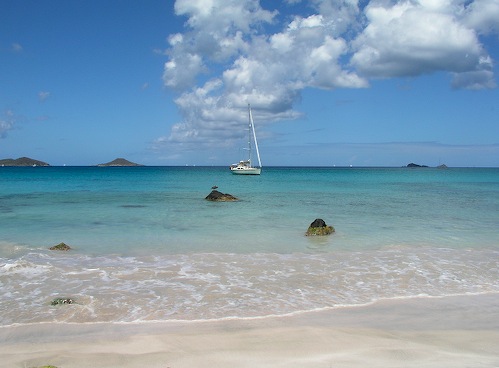
Transatlantic Notes
Here are a few musings from the passage.
- fast ! we were on track to cross in 16 days until the final 500 miles when we had very light winds and calms even. Just when we expected the trade winds to be at their most predictable an unusual low pressure north of us took all the wind away. So we got to practice our very light wind sailing. The problem was 2-3 meter waves from the sides kept us rolling too much so sail effectively. So our final passage time was 18 days. Still very respectable.
- daily runs - we had a few daily runs over 170 miles.
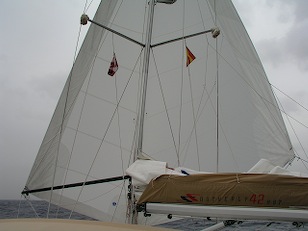 - downwind rig - we ran our twin headsails for many days and it worked really well. We set up the pole for the self-tacker sail with a topping lift and downhaul and used this on the windward side. With the topping lift and downhaul we could furl the sail and just leave the pole out in case we didn't want to go forward to take it down. The Genoa was set out on the end of the main boom. We used a snatch block and led the sheet aft to another block at the stern. Then we used a preventer to pull the main boom forward. This meant we had a second pole for the second sail.
- downwind rig - we ran our twin headsails for many days and it worked really well. We set up the pole for the self-tacker sail with a topping lift and downhaul and used this on the windward side. With the topping lift and downhaul we could furl the sail and just leave the pole out in case we didn't want to go forward to take it down. The Genoa was set out on the end of the main boom. We used a snatch block and led the sheet aft to another block at the stern. Then we used a preventer to pull the main boom forward. This meant we had a second pole for the second sail.
- dealing with chafe - always a problem on long passages since the sails can be set in the same position for days at a time. We had problems with the batten pockets on the main sail chafing on the shrouds on our passage to the Canary Islands so we applied some chafe patches before the transatlantic. Still more work is needed on this since the patches we applied chafed through quite quickly on the passage! The problem is the battens make a hard point and the swept back spreaders mean they touch the sail even on a beam reach. Since we were sailing on a broad reach we had to live with the sail touching the spreaders and shrouds. My next plan is to try leather patches on the batten pockets.
 - New Years at sea! We saw in the new year after almost a week at sea and tried to make it a bit of a special night. We all stayed up to midnight even though we would have to continue our watch system on through till dawn. Here our mascot moose watches the celebrations from his perch on the bookshelf in the saloon. Later on he hid out when he heard we were in the Horse latitudes. In the old days sailors becalmed here ran low on water and couldn't afford to water the horses - so they had to throw them overboard. Our moose became concerned that he might fall into the equine category and be jetissoned in the calms. He needn't have worried since the Schenker desalinator worked wonderfully. We even had enough water for showers whenever we wanted.
- New Years at sea! We saw in the new year after almost a week at sea and tried to make it a bit of a special night. We all stayed up to midnight even though we would have to continue our watch system on through till dawn. Here our mascot moose watches the celebrations from his perch on the bookshelf in the saloon. Later on he hid out when he heard we were in the Horse latitudes. In the old days sailors becalmed here ran low on water and couldn't afford to water the horses - so they had to throw them overboard. Our moose became concerned that he might fall into the equine category and be jetissoned in the calms. He needn't have worried since the Schenker desalinator worked wonderfully. We even had enough water for showers whenever we wanted.
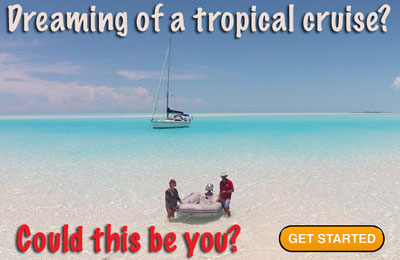
Join our email list and get hints, technical articles and tips plus videos to help you achieve your cruising dreams.
What a winter its been! From a very late season crossing of the Bay of Biscay, a lovely Transatlantic with Wayne & Angie making up a crew of four, and then island hopping from Antigua, Barbuda, Anguilla and St Martin. Now we are relaxing in the BVI and having fun with our "share the sail" guests. In a few weeks we will set sail north from the Virgins and head for the Turks and Caicos and Bahamas. There is still time to book one of these legs and they promise to be exciting - a few days at sea and a few days in remote tropical paradise.

Transatlantic Notes
Here are a few musings from the passage.
- fast ! we were on track to cross in 16 days until the final 500 miles when we had very light winds and calms even. Just when we expected the trade winds to be at their most predictable an unusual low pressure north of us took all the wind away. So we got to practice our very light wind sailing. The problem was 2-3 meter waves from the sides kept us rolling too much so sail effectively. So our final passage time was 18 days. Still very respectable.
- daily runs - we had a few daily runs over 170 miles.

- dealing with chafe - always a problem on long passages since the sails can be set in the same position for days at a time. We had problems with the batten pockets on the main sail chafing on the shrouds on our passage to the Canary Islands so we applied some chafe patches before the transatlantic. Still more work is needed on this since the patches we applied chafed through quite quickly on the passage! The problem is the battens make a hard point and the swept back spreaders mean they touch the sail even on a beam reach. Since we were sailing on a broad reach we had to live with the sail touching the spreaders and shrouds. My next plan is to try leather patches on the batten pockets.


Join our email list and get hints, technical articles and tips plus videos to help you achieve your cruising dreams.
- FREE 1/2 hour video on cruising the Exuma Islands in the Bahamas
- Technical Blog shows you how to deal with issues facing the cruising sailor
- Destination information from some of the world's best cruising areas
- Special discounts and promotions